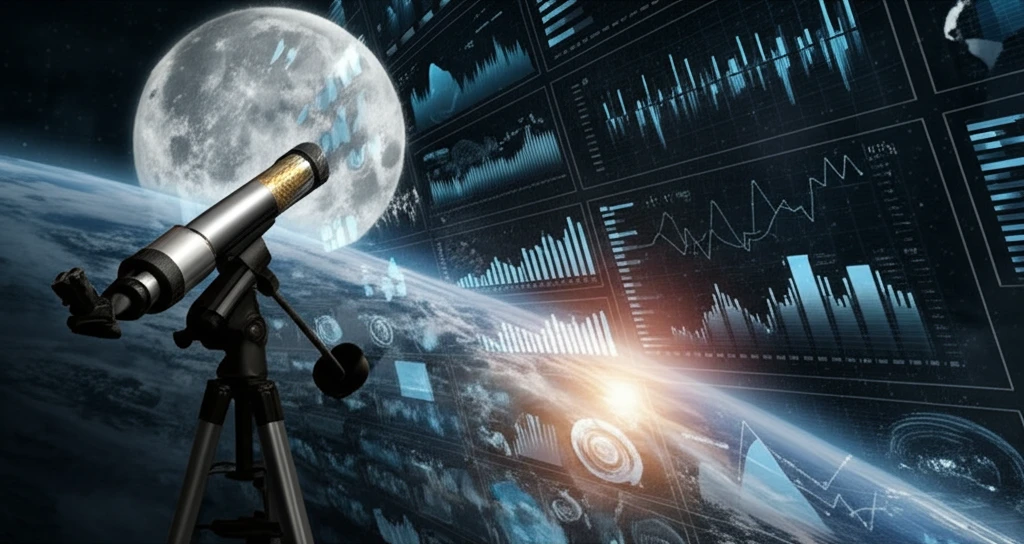
Unlocking Climate Insights: How Lunar Measurements Could Revolutionize Earth Data
"Dive into the groundbreaking research using lunar spectral irradiance for more accurate climate monitoring and bridging satellite data gaps."
For years, scientists have diligently tracked changes on our planet using satellites, gathering crucial data about everything from vegetation cover to ice albedo. But what happens when satellite missions end or experience gaps in coverage? Maintaining consistent climate data records is essential for understanding long-term changes, and that's where the Moon comes in. Recent advancements propose using the Moon as a reliable calibration standard, ensuring data consistency across different satellite missions.
Traditionally, climate scientists have relied on solar diffusers and well-characterized Earth surface sites for calibration. However, these methods have limitations, including the degradation of solar diffusers and the need for constant maintenance of surface sites. These challenges can introduce uncertainties and potential gaps in data, making it difficult to accurately assess climate trends. Lunar calibration offers a promising alternative, sidestepping atmospheric corrections and providing a consistent reference point for all Earth-orbiting satellites.
The National Institute of Standards and Technology (NIST) has been at the forefront of this exciting research, developing innovative techniques to measure lunar spectral irradiance with unprecedented accuracy. This new level of precision opens up the possibility of using the Moon not only to track changes in sensor response but also as a means of absolute calibration. By improving the accuracy of climate data, we can gain a clearer understanding of our changing world and make more informed decisions about its future.
The Moon as a Climate Calibration Standard: Addressing Key Challenges

The recent study published in the Journal of Research of the National Institute of Standards and Technology highlights a significant step forward in using the Moon for climate data calibration. The research team successfully measured lunar spectral irradiance with an uncertainty of less than 1% between 420 nm and 1000 nm. This level of precision meets the stability requirements for many climate data records derived from satellite images, including those related to vegetation, aerosols, and snow and ice albedo.
- Atmospheric Correction: Correcting for the effects of ozone and stratospheric aerosols is crucial for accurate measurements. The team used data from NASA's Ozone Monitoring Instrument (OMI) and the second-generation Stratospheric Aerosol and Gas Experiment (SAGE II) to account for these atmospheric components.
- SI-Traceability: Establishing traceability to the Système Internationale (SI) radiometric units is essential for ensuring the reliability and comparability of measurements. This was achieved by measuring the spectral irradiance of an artificial moon using a NIST-calibrated spectrograph.
- Temporal Variability: Accounting for the time-dependence of lunar irradiance due to the continually-evolving relative positions of the Sun, Moon, and observer is necessary for precise calibration. The team used a model developed by the USGS to address this factor.
The Future of Lunar Calibration: Towards More Accurate Climate Data
While this study represents a major advancement, the research team emphasizes that it's just the first step in a long-term program. Future measurements for different lunar phases and libration angles will further refine the USGS model and potentially uncover systematic effects. Improvements in laboratory calibration, the use of higher-altitude observatories, and laser-based techniques could also contribute to even greater accuracy. By continuing to explore the potential of lunar calibration, we can unlock a new level of precision in climate data, leading to a more informed and sustainable future.
